Want to know more about the Best Social Sciences Schools In the US and make an informed decision? Here is a good place to start.
Choosing the right social sciences school can be a daunting task, with thousands of options available and factors to consider.
To make the decision-making process easier, we’ve compiled a list of the best social sciences schools in the US, complete with key information about each institution.
Let’s dive in!
Please note that schools are selected based on our criteria (at the end of the article), ranked by the latest acceptance rate.
Table of Contents
#25. University of Pittsburgh


- Acceptance rate: 64%
- Average entry score: 1250-1470 SAT or 28-33 ACT
- Student-to-faculty ratio: 14 to 1
- Estimated cost of attendance (tuition and fees): $19,760-$36,000
- Average earning potential for graduates: $26,725 (College Factual)
At the University of Pittsburgh, social sciences students are presented with numerous opportunities to learn and make significant contributions to the research community.
The faculty is a highly active and dynamic group, consistently engaged in the most recent developments in their respective fields.
Students are encouraged to work closely with faculty members on research projects, which frequently result in publication opportunities for both the students and the professors.
Source: College of General Studies
#24. The Ohio State University


- Acceptance rate: 57%
- Average entry score: 1250-1440 SAT or 26-32 ACT
- Student-to-faculty ratio: 18 to 1
- Estimated cost of attendance (tuition and fees): $29,368-$52,451
- Average earning potential for graduates: $42,100 (College Simply)
The Ohio State University’s social sciences department integrates the study of human societies with scientific inquiry.
This school brings together the humanities and the sciences to explore how humans shape their world.
A social sciences major can choose from a variety of majors and minors, including anthropology, economics, geography, political science, and sociology.
Source: The Ohio State University
#23. University of Washington
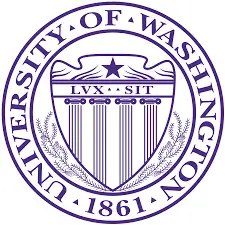

- Acceptance rate: 54%
- Average entry score: 1220-1470 SAT or 29-34 ACT
- Student-to-faculty ratio: 9 to 1
- Estimated cost of attendance (tuition and fees): $30,640-$58,470
- Average earning potential for graduates: $51,900 (College Simply)
The University of Washington’s social sciences programs produce graduates with a deep understanding of the social, cultural, and political forces that shape our world.
Students gain critical thinking and analytical skills that prepare them for a wide range of careers. Graduates are equipped to make informed decisions, engage in meaningful dialogue, and contribute positively to society.
They are leaders who can navigate complex social issues and work towards creating a better future for all.
Source: UW College of Arts & Sciences
#22. University of California Irvine


- Acceptance rate: 29%
- Average entry score: 1230-1430 SAT or 26-33 ACT
- Student-to-faculty ratio: 18 to 1
- Estimated cost of attendance (tuition and fees): $34,161-$63,915
- Average earning potential for graduates: $32,400 (College Factual)
The UCI School of Social Sciences offers a comprehensive education to equip graduates with the skills and knowledge necessary to excel in a range of fields.
With a focus on interdisciplinary approaches, students gain a deep understanding of the social, political, and economic forces that shape our world.
Graduates emerge as critical thinkers, problem solvers, and effective communicators, ready to make a positive impact in their chosen professions and communities.
Source: UCI General Catalog
Similar articles like this:
- 25 Best Information Technology Schools In The US
- 25 Best Zoology Schools In The US
- 25 Best Journalism Schools In The US
#21. University of Michigan Ann Arbor


- Acceptance rate: 20%
- Average entry score: 1360-1530 SAT or 31-34 ACT
- Student-to-faculty ratio: 15 to 1
- Estimated cost of attendance (tuition and fees): $32,272-$69,326
- Average earning potential for graduates: $45,306 (College Factual)
The University of Michigan’s social sciences department combines the strengths of a large, top-ranked social science research university with the benefits of a smaller, more intimate learning environment.
Students take advantage of the personalized education that only a small college can offer, while also gaining access to the resources and benefits of a large research university.
Backed by a friendly faculty, the department offers a variety of undergraduate and graduate social sciences degrees that prepare students for careers in the social sciences.
Source: University of Michigan
#20. Carnegie Mellon University


- Acceptance rate: 14%
- Average entry score: 1480-1560 SAT or 33-35 ACT
- Student-to-faculty ratio: 6 to 1
- Estimated cost of attendance (tuition and fees): $77,474
- Average earning potential for graduates: $30,700 (College Simply)
Carnegie Mellon University’s social sciences programs offer a range of job opportunities for graduates.
The university’s interdisciplinary approach to education combines social sciences with technology and business to produce graduates who are well-rounded and prepared for a variety of careers.
Graduates from these programs can pursue careers in fields such as market research, data analysis, social policy, and more.
The university’s strong industry partnerships also provide undergraduate students with opportunities for internships and job placements after graduation.
Source: Dietrich College of Humanities & Social Sciences
#19. University of California Berkeley
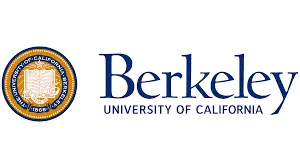

- Acceptance rate: 14%
- Average entry score: 1415 SAT
- Student-to-faculty ratio: 17 to 1
- Estimated cost of attendance (tuition and fees): $41,878-$71,632
- Average earning potential for graduates: $55,102 (College Factual)
The social sciences division at UC Berkeley is made up of 15 departments all focused on the study of society and human behavior.
UC Berkeley enjoys a personalized learning experience with small class sizes and close faculty-student relationships. This allows social sciences majors to get individualized attention and guidance on their academic path.
Graduates leave UC Berkeley with a strong understanding of the social sciences, which gives them a competitive edge in a wide range of careers.
Source: Berkeley Academic Guide
#18. University of Southern California


- Acceptance rate: 13%
- Average entry score: 1320-1520 SAT or 30-34 ACT
- Student-to-faculty ratio: 9 to 1
- Estimated cost of attendance (tuition and fees): $60,446
- Average earning potential for graduates: $28,365 (College Factual)
The University of Southern California’s social sciences programs provide an exceptional educational experience with a notable emphasis on research, analytical skills, and collaboration.
Distinguished faculty members bring real-world experience and cutting-edge research to the classroom.
The curriculum is designed to broaden students’ understanding of social issues while also allowing them to specialize in their areas of interest.
Source: USC Dornsife
Similar articles like this:
- 25 Best Schools For Soil Sciences In The US
- 25 Best Art History Schools In The US
- 25 Best Schools For Aerospace Engineering In The US
#17. Emory University


- Acceptance rate: 13%
- Average entry score: 1420-1540 SAT or 32-34 ACT
- Student-to-faculty ratio: 9 to 1
- Estimated cost of attendance (tuition and fees): $75,594
- Average earning potential for graduates: $42,500 (College Simply)
Emory University through the College of Arts and Sciences takes a leading role in the teaching of social sciences.
With a diverse range of programs, Emory offers students a comprehensive education in the social sciences. The college’s commitment to research ensures that students are exposed to the latest concepts in the social sciences.
Students can expect to graduate with a deep understanding of the complexities of society and the tools to analyze and address social issues.
Source: Emory College of Arts and Sciences
What’s it like to study at Emory University?
#16. Johns Hopkins University


- Acceptance rate: 11%
- Average entry score: 1510-1570 SAT or 34-35 ACT
- Student-to-faculty ratio: 7 to 1
- Estimated cost of attendance (tuition and fees): $78,657
- Average earning potential for graduates: $36,200 (College Simply)
Johns Hopkins University’s social sciences programs take students into the heart of the city to engage in the issues that Baltimore faces every day.
Students learn about urban poverty, education inequality, politics, and social justice through hands-on experience working with community partners.
Johns Hopkins is one of the top universities in the country for social sciences. They offer students a wide variety of courses that can prepare them for careers in education, criminal justice, public policy, and more.
Source: Krieger School of Arts & Sciences
#15. Cornell University
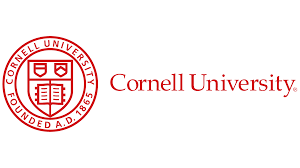

- Acceptance rate: 11%
- Average entry score: 1450-1560 SAT or 33-35 ACT
- Student-to-faculty ratio: 9 to 1
- Estimated cost of attendance (tuition and fees): $78,992
- Average earning potential for graduates: $43,300 (College Simply)
Cornell University’s social sciences programs are considered some of the best in the United States due to their interdisciplinary approach, world-renowned faculty, and cutting-edge research methods.
With a focus on collaborative, hands-on learning, students have access to abundant resources, including research labs, internship opportunities, and funded projects.
This combination of academic rigor, practical experience, and innovation has produced graduates who are well-equipped to tackle complex global challenges.
Source: Social Sciences, Cornell University
#14. Tufts University

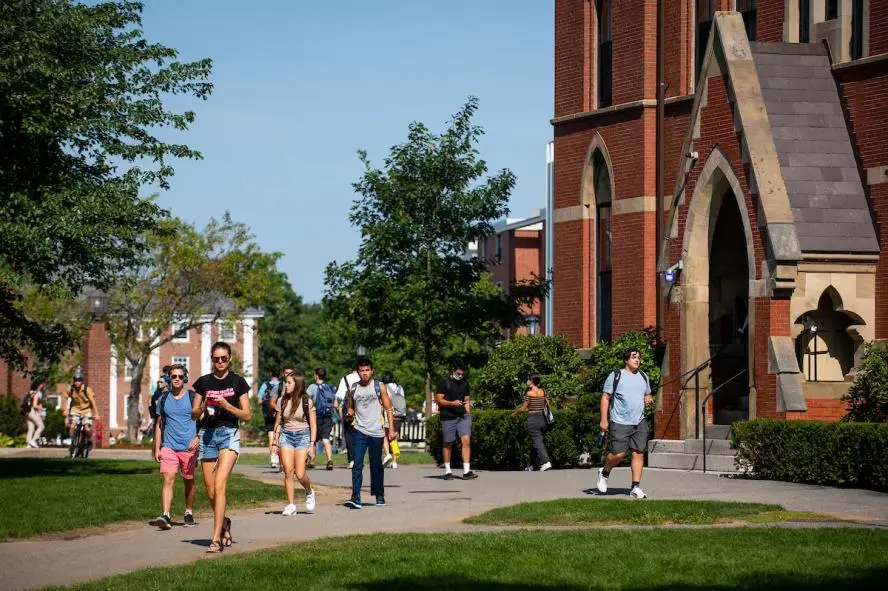
- Acceptance rate: 11%
- Average entry score: 1440-1550 SAT or 33-35 ACT
- Student-to-faculty ratio: 9 to 1
- Estimated cost of attendance (tuition and fees): $81,700
- Average earning potential for graduates: $44,600 (College Simply)
Tufts University’s social sciences programs offer a distinctive interdisciplinary approach, allowing students to explore and understand complex societal issues from multiple perspectives.
The university’s commitment to active citizenship and social justice is reflected in its coursework. This emphasizes community engagement and the practical application of knowledge.
Students have the opportunity to conduct research alongside renowned faculty members and participate in internships and service-learning programs.
Source: Tufts University
Similar articles like this:
- 25 Best Schools For Business Management Studies In The US
- 25 Best Schools For Programming In The US
- 25 Best Commerce Schools In The US
#13. University of California Los Angeles


- Acceptance rate: 11%
- Average entry score: 1290-1520 SAT
- Student-to-faculty ratio: 18 to 1
- Estimated cost of attendance (tuition and fees): $16,847-$31,949
- Average earning potential for graduates: $34,801 (College Factual)
UCLA offers a variety of social sciences programs that provide students with the opportunity to develop critical thinking, problem-solving, and communication skills.
Graduates of these programs are equipped with the knowledge and tools to analyze complex social issues and create effective solutions.
The end product of these programs is a well-rounded individual who is able to navigate the complexities of the modern world and make meaningful contributions to society.
With a focus on interdisciplinary approaches and real-world experiences, UCLA social sciences graduates are prepared to tackle the challenges of the future.
Sources: UCLA Social Sciences
What’s it like to study at UCLA?
#12. Rice University


- Acceptance rate: 10%
- Average entry score: 1490-1570 SAT or 34-35 ACT
- Student-to-faculty ratio: 6 to 1
- Estimated cost of attendance (tuition and fees): $74,110
- Average earning potential for graduates: $34,800 (College Simply)
Rice University’s social sciences students are provided with a strong foundation in analytical and critical thinking, as well as research skills.
Graduates of these programs have gone on to work in various sectors such as government, non-profit organizations, and private businesses.
They have held roles such as policy analysts, consultants, researchers, and more. The university’s career center provides resources and support for students to find job opportunities after graduation.
Source: Rice University School of Social Sciences
#11. University of Chicago


- Acceptance rate: 7%
- Average entry score: 1510-1580 SAT or 33-35 ACT
- Student-to-faculty ratio: 5 to 1
- Estimated cost of attendance (tuition and fees): $85,536
- Average earning potential for graduates: $40,900 (College Simply)
UChicago is known for its rigorous academic standards and commitment to intellectual inquiry. This attracts top scholars and students from around the world.
Their Social Sciences Division provides excellent research facilities and a supportive environment for students and faculty.
Social Sciences students learn under the guidance of world-class faculty and are well-prepared for careers in academia, government, business, law, and public policy.
Source: Social Sciences Division, UChicago
What’s it like to study at the University of Chicago?
#10. Northwestern University


- Acceptance rate: 7%
- Average entry score: 1440-1550 SAT or 33-35 ACT
- Student-to-faculty ratio: 6 to 1
- Estimated cost of attendance (tuition and fees): $62,391
- Average earning potential for graduates: $47,000 (College Simply)
Northwestern University’s social sciences programs offer a collaborative and intellectually stimulating learning environment. Students have access to world-renowned faculty, cutting-edge research facilities, and interdisciplinary coursework.
This university’s commitment to diversity and inclusion fosters a welcoming community where students can explore different perspectives and ideas.
The curriculum also emphasizes hands-on learning experiences preparing students for successful careers in various fields within the social sciences.
Source: Northwestern University
What’s it like to study at Northwestern University?
Similar articles like this:
#9. Vanderbilt University


- Acceptance rate: 7%
- Average entry score: 1480-1570 SAT or 34-35 ACT
- Student-to-faculty ratio: 8 to 1
- Estimated cost of attendance (tuition and fees): $79,558
- Average earning potential for graduates: $56,276 (College Factual)
At Vanderbilt University, social sciences are no laughing matter – except when they are! The school’s range of programs, from anthropology to psychology, is anything but stuffy.
With a faculty of renowned scholars and opportunities for interdisciplinary collaboration, Vanderbilt’s social sciences are as cool as the other side of the pillow.
Vanderbilt’s social sciences programs also emphasize experiential learning, with students participating in internships, service-learning, and research projects that have real-world applications.
Source: College of Arts and Science
What’s it like to study at Vanderbilt University?
#8. Duke University


- Acceptance rate: 6%
- Average entry score: 1480-1570 SAT or 33-35 ACT
- Student-to-faculty ratio: 8 to 1
- Estimated cost of attendance (tuition and fees): $84,517
- Average earning potential for graduates: $60,357 (College Factual)
Duke University’s social sciences provide a rigorous and interdisciplinary approach to research and education in fields such as sociology, political science, psychology, and economics.
Through innovative coursework, hands-on research opportunities, and access to leading scholars, the university prepares the next generation of social scientists to tackle complex social issues.
Source: Trinity College of Arts & Sciences
#7. University of Pennsylvania


- Acceptance rate: 6%
- Average entry score: 1460-1570 SAT or 33-35 ACT
- Student-to-faculty ratio: 7 to 1
- Estimated cost of attendance (tuition and fees): $65,790
- Average earning potential for graduates: $35,500 (College Simply)
At the University of Pennsylvania, social sciences students receive a broad education in the social sciences and humanities with an emphasis on understanding human behavior, culture, and institutions.
Social science majors are trained to think critically about issues that affect all of us, such as race relations, poverty, and inequality.
The flexibility of these programs allows students to explore their interests in a number of different areas, including political science, sociology, economics, and anthropology.
Source: University of Pennsylvania
#6. Dartmouth College
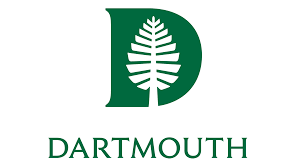

- Acceptance rate: 6%
- Average entry score: 1449-1560 SAT or 32-35 ACT
- Student-to-faculty ratio: 7 to 1
- Estimated cost of attendance (tuition and fees): $81,662
- Average earning potential for graduates: $38,900 (College Simply)
Dartmouth College’s social sciences programs stand out for their interdisciplinary approach, combining insights from anthropology, economics, political science, psychology, and sociology.
Faculty members are highly regarded experts in their fields. They bring a wealth of academic and professional experience to their teaching, grounded in the liberal arts tradition.
Students benefit from the program’s emphasis on experiential learning, which includes fieldwork, internships, and study abroad.
Source: Dartmouth
Similar articles like this:
- Best Schools For Geography Degrees
- 25 Best Business Administration Schools In The US
- Best Schools For Forensic Science
#5. Brown University


- Acceptance rate: 6%
- Average entry score: 1460-1570 SAT or 33-35 ACT
- Student-to-faculty ratio: 6 to 1
- Estimated cost of attendance (tuition and fees): $84,986
- Average earning potential for graduates: $46,090 (Grad Reports)
Brown University’s Department of Behavioral and Social Sciences equips social sciences students with the necessary skills to excel in their field.
Through rigorous coursework, research opportunities, and hands-on experience, students gain knowledge and expertise in data analysis, critical thinking, and effective communication.
The department also fosters a collaborative environment where students can engage with faculty and peers to develop their skills further.
Source: Department of Behavioral and Social Sciences, Brown University
What’s it like to study at Brown University?
#4. Yale University


- Acceptance rate: 5%
- Average entry score: 33-35 ACT
- Student-to-faculty ratio: 6 to 1
- Estimated cost of attendance (tuition and fees): $84,525
- Average earning potential for graduates: $41,300 (College Simply)
Yale’s Social Sciences programs offer a close-knit community of students who are passionate about exploring the complexities of human behavior and society.
With small class sizes and individualized attention from world-renowned faculty, students have the opportunity to engage in rigorous academic inquiry and hands-on research.
The program fosters a collaborative environment where students are encouraged to share ideas and perspectives, ultimately preparing them for impactful careers in academia, policy, and beyond.
Source: Yale Social Sciences
#3. Harvard University


- Acceptance rate: 4%
- Average entry score: 1460-1580 SAT or 33-34 ACT
- Student-to-faculty ratio: 7 to 1
- Estimated cost of attendance (tuition and fees): $76,963
- Average earning potential for graduates: $42,926 (College Factual)
Harvard University offers a range of social sciences programs across multiple departments, including anthropology, economics, government, psychology, and sociology.
The programs focus on understanding societies and human behavior through a variety of lenses, including history, culture, politics, and economics.
Students have access to world-renowned scholars, research centers, and resources such as the Harvard Library, the Institute for Quantitative Social Science, and the Weatherhead Center for International Affairs.
Graduates of these programs have gone on to have successful careers in academia, government, non-profits, and the private sector.
Source: Harvard University
What’s it like to study at Harvard University?
#2. Columbia University

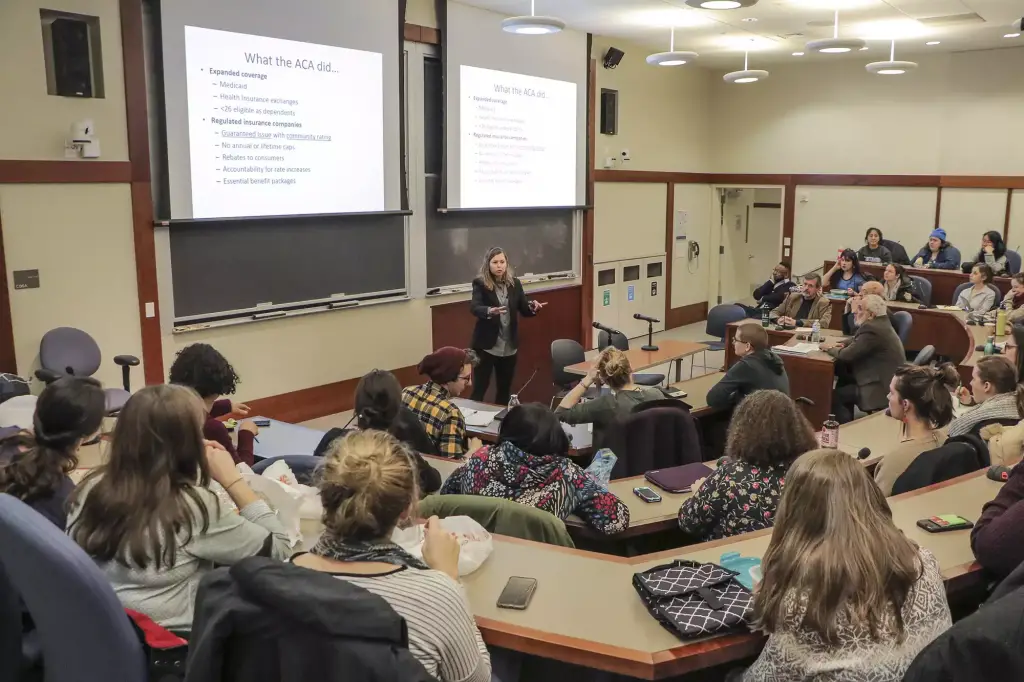
- Acceptance rate: 4%
- Average entry score: 1440-1570 SAT or 34-35 ACT
- Student-to-faculty ratio: 6 to 1
- Estimated cost of attendance (tuition and fees): $85,000
- Average earning potential for graduates: $35,100 (College Simply)
Columbia University’s social sciences programs are highly regarded for their exceptional faculty members. The faculty includes renowned scholars and practitioners committed to cutting-edge research and teaching.
These faculty members are experts in their respective fields, ranging from anthropology and political science to economics and sociology. They are also dedicated to providing students with a comprehensive and rigorous education that prepares them for career success.
Source: Division of Social Sciences
#1. Stanford University

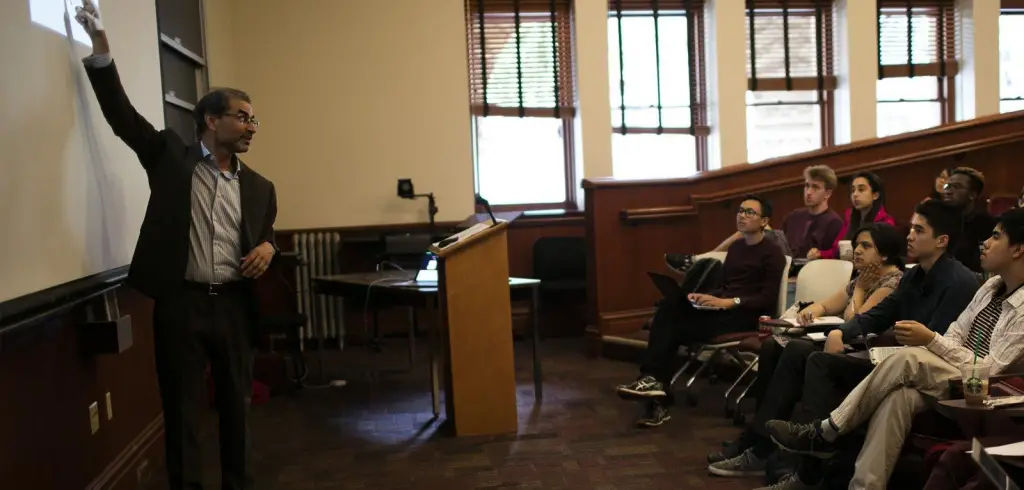
- Acceptance rate: 4%
- Average entry score: 1470-1570 SAT or 34-35 ACT
- Student-to-faculty ratio: 5 to 1
- Estimated cost of attendance (tuition and fees): $78,898
- Average earning potential for graduates: $41,300 (College Simply)
Stanford University’s humanities and social sciences programs aim to produce graduates who are well-rounded, critical thinkers with the ability to problem-solve and communicate effectively.
The end result of this world-class education is a group of students who are able to navigate the complexities of life and make meaningful contributions.
Source: Stanford Bulletin
Conclusion
Whether you’re interested in psychology, sociology, economics, political science, or any other social science field, there are plenty of top-notch schools in the US to choose from.
With extensive research opportunities, renowned faculty, and cutting-edge facilities, these schools will equip you with the skills and knowledge you need to make a real difference in the world of social sciences.
Selection Criteria
Here is a list of the factors we considered when selecting the best social sciences schools:
Please note that the order in this list might vary by ranking criteria and sources.
- Reputation and ranking of the school: We looked for schools that have a strong reputation and high ranking in the field of social sciences.
- Faculty expertise, qualifications, and specialization: We researched the faculty members and their areas of expertise and qualifications to ensure that the school has professors with relevant expertise and specialization in the areas of social sciences that are of interest.
- Curriculum and resources: We evaluated the curriculum to ensure it aligns with students’ interests and career goals and considered the quality of the school’s facilities and resources, such as labs, equipment, and libraries.
- Opportunities for hands-on learning and research: We looked for schools that provide opportunities for hands-on experience through internships, co-op programs, or fieldwork.
- Student support services and alumni network: We considered the availability of support services and the strength of the alumni network in providing mentorship, internships, and job opportunities after graduation.
- Extracurricular activities and diversity: We evaluated the availability of extracurricular activities and clubs that align with students’ interests and considered the school’s diversity and inclusivity.
- Networking and post-graduation support: We researched the school’s network of alumni and their post-graduation support for social sciences students and also considered if the schools have a strong network of industry professionals and researchers in social sciences.
Frequently Asked Questions
Q1. What are the best social sciences schools in the United States?
The top social sciences schools are Harvard, Stanford, Columbia, and the University of California, Berkeley.
These four universities offer a wide range of undergraduate degrees in fields related to social sciences.
Q2. What are the most popular majors in social sciences?
Many well-known social science majors are directly related to the field. These include anthropology, sociology, and political science.
Social sciences also encompass many other areas of study, such as history, economics, and psychology. Students may choose to specialize in an area such as public policy or cultural studies.
Q3. How long does it take to get a degree in social sciences?
Social science degrees vary in length depending on the school and degree program. For example, a bachelor’s degree may take four years to complete.
Some master’s programs can be completed in two years or less, while doctoral programs usually take five or more years to complete.
Q4. How much do students earn after graduating from a school of social sciences?
Social science graduates can expect to earn a median salary of between $ 45,390-$ 118,080 per year, according to data from Payscale, Glassdoor, and Comparably.
Q5. What are the job opportunities for social sciences graduates?
Social science graduates can expect to find a variety of employment opportunities.
Many social science majors go on to work in education, law enforcement, healthcare, and government. Some may also choose to pursue careers in marketing or public relations.
References
[1] Official Websites
[2] Salary Data from Glassdoor, Grad Reports, College Factual, College Simply, Zippia
[3] Ranking references, including news media such as Colleges Offering a Social Sciences Major


